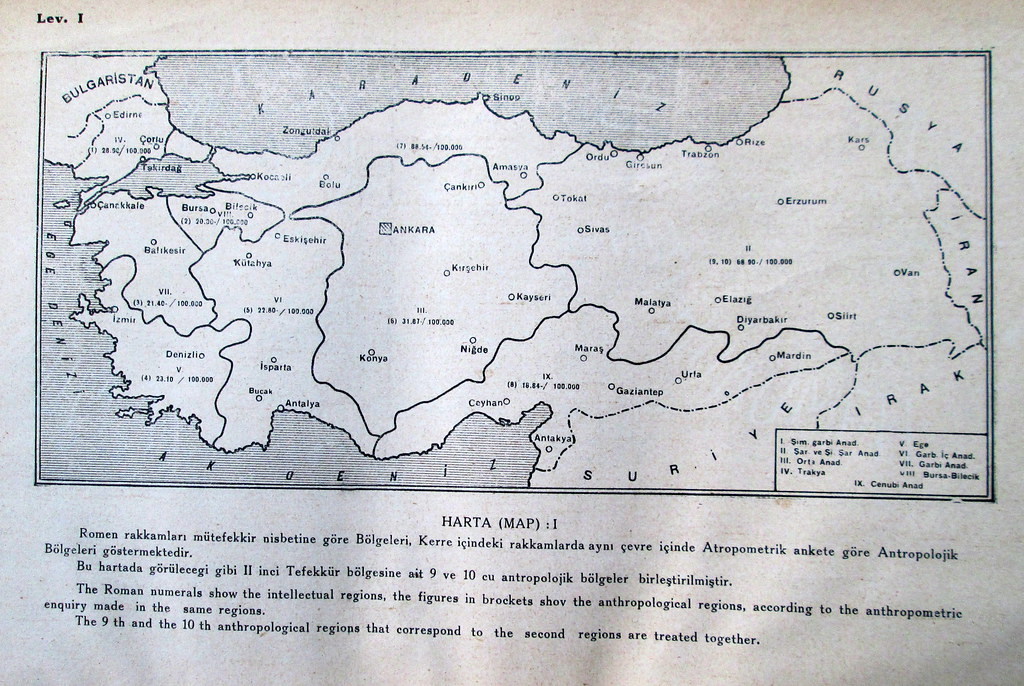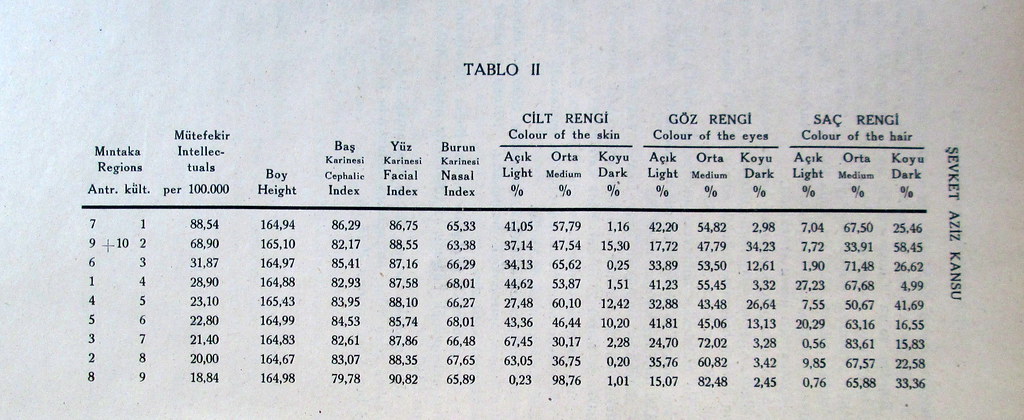Nick Danforth, Georgetown University
In what was undoubtedly one of the most remarkable academic endeavors of 1940, Professor Dr. Sevket Aziz Kansu, the Dean of the Faculty of Languages, History and Geography at the University of Ankara, set out to tabulate and map the number of Ottoman intellectuals produced per capita in each of the major regions of Anatolia. He did so using 1927 census data, Bursali Mehmet Tahir's "Ottoman Authors," 906 index cards - classified according to birthplace, and a set of 9 geographic regions that he just kind of made up. The surprising results, after the jump.
Though widely mocked, the Black Sea region had indeed produced more intellectuals per capita than any other part of Turkey. The western half of the Black Sea coast, (which coincidentally included Istanbul), ranked first, while the Eastern half was part of "East and Northeast Anatolia" which came in second. But this discovery was not enough for Kansu: "These first results having been obtained, the existence, in Anatolia, of centres which had produced intellectuals became evident. As I was beginning to examine the historical and sociological indications of these first results, another thought struck me. Can these regions which I have determined, have any relation with an anthropological factor?" That's where the second chart came in:
Combining data from a 1937 anthropometric enquiry made into 59,728 Turkish men and women by the Bureau of Statistic, he obtained average physical characteristics for each of his "intellectual regions." Kansu then prepared the map above in which each region was ranked in order of intellectual output, as marked by the Roman numeral, next to an Arabic numeral corresponding to its Anthropological region.
"Our attention at this point of our research is drawn to this outstanding fact: The ratio tables and the anthropological character of the region that has produced the greatest amount of intellectual men, and the anthropological character of the region that has produced the least. Against the region most productive of intellectual men, that is North West Anatolia, with a cephalic index of 86.29 - a strong brachycephalic type and a ratio of production of 88.54 per 100,000, we have South Anatolia with an average cephalic index 79.78 - a mesaticephalic type- and a ratio of 18.84 per 100,000. In the first intellectual region we meet the "homo alpinus" while the 9th region shows types which have come under the influence of the "homo meridionalis" and border on the brachycephalous. This fact stands out so clearly from our research that I shall be content with merely stating it."
Though authors such as Gunay Ozdogan have documented how Turkish nationalism became increasingly racialized over the course of the 1930s, this study is just one example of the fact that racial science was not always used in proving the uniformity of the nation, but could serve nationalist ends in more complex ways. In this case Kansu concludes that the regions with the strongest Selcuk, that is, Turkish, cultural and genetic influence, produced the most intellectuals.






